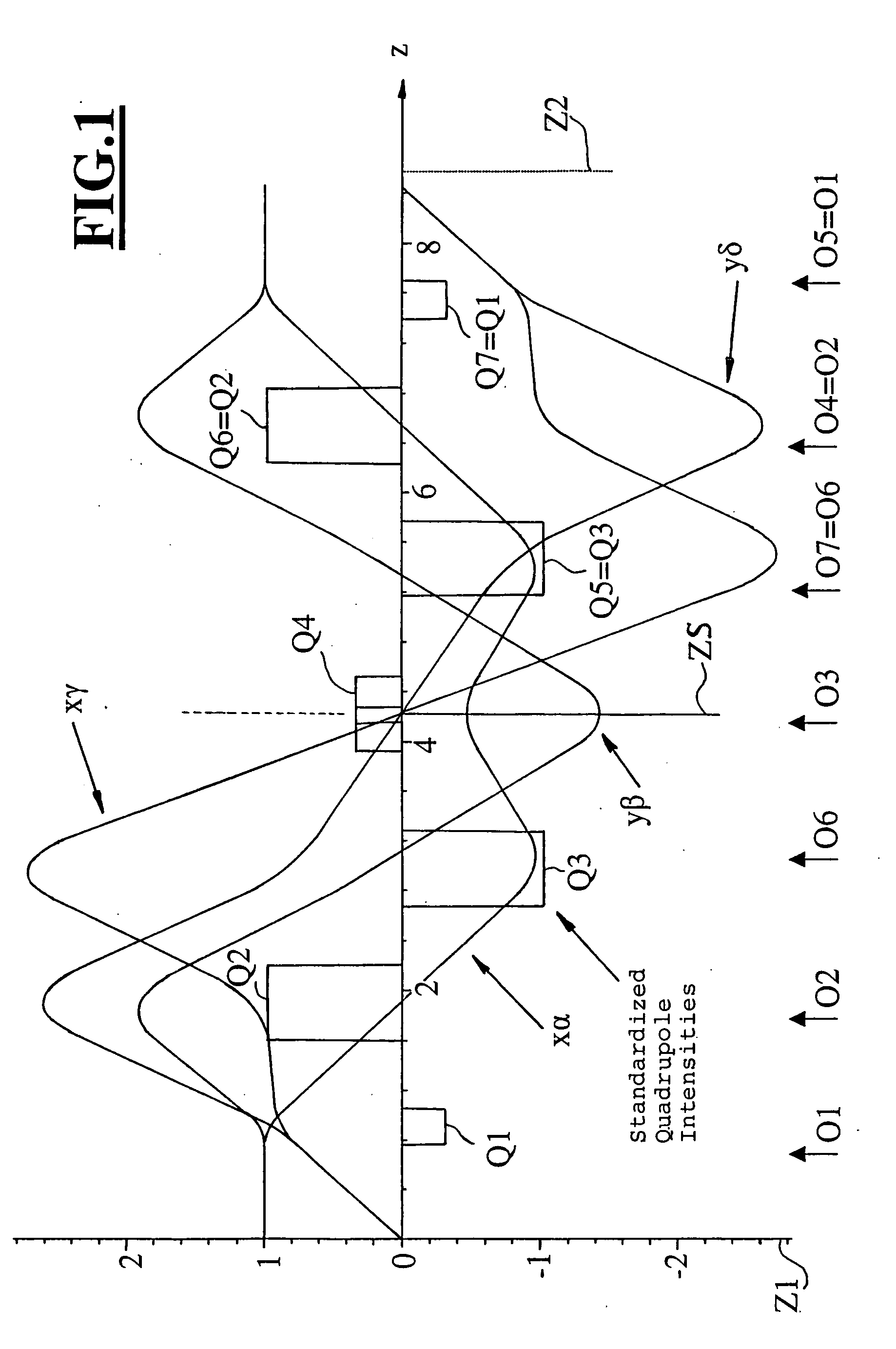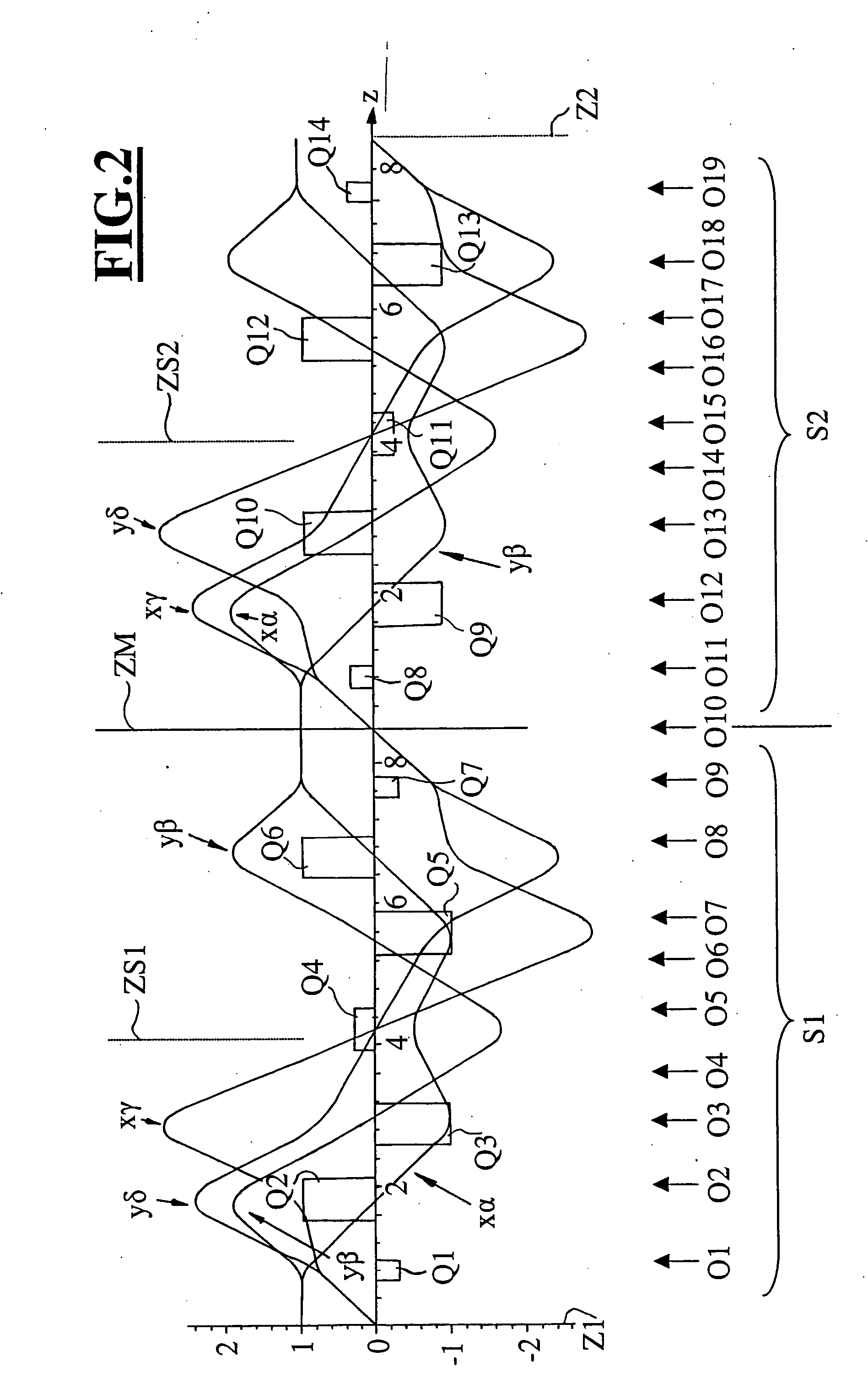Corrector for correcting first-order chromatic aberrations of the first degree
a technology of electronoptical lens and correction device, which is applied in the direction of instruments, magnetic discharge control, nuclear engineering, etc., can solve the problem that the correction device cannot be used in combination with the system
- Summary
- Abstract
- Description
- Claims
- Application Information
AI Technical Summary
Benefits of technology
Problems solved by technology
Method used
Image
Examples
Embodiment Construction
[0027] In FIG. 1, the traces and the intensities of the quadrupole fields (Q1 to Q7) are shown excited along a linear axes. The quadrupoles (Q1 to Q7) are symmetrical to the center symmetry plane ZS. The symmetry plane ZS defines a plane of symmetry with respect to the quadrupole fields as well as with respect to the fundamental paths. As symmetry planes, those planes are understood with respect to which the quadrupole potentials are symmetrical and the paraxial paths are symmetrical or anti-symmetrical.
[0028] A portion of the quadrupoles (Q1 to Q7) should be electromagnetic, that is, at least three quadrupole pairs should be electromagnetic in each of the two mutually symmetrical halves of the corrector. More specifically, these at least three quadrupole pairs should comprise the superposition of mutually perpendicular electrostatic and magnetic quadrupole fields in order to correct the axial chromatic aberration. With the exception of the two outer quadrupoles (Q1, Q7), all remai...
PUM
 Login to View More
Login to View More Abstract
Description
Claims
Application Information
 Login to View More
Login to View More - R&D
- Intellectual Property
- Life Sciences
- Materials
- Tech Scout
- Unparalleled Data Quality
- Higher Quality Content
- 60% Fewer Hallucinations
Browse by: Latest US Patents, China's latest patents, Technical Efficacy Thesaurus, Application Domain, Technology Topic, Popular Technical Reports.
© 2025 PatSnap. All rights reserved.Legal|Privacy policy|Modern Slavery Act Transparency Statement|Sitemap|About US| Contact US: help@patsnap.com



